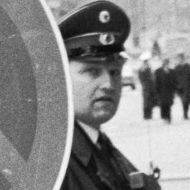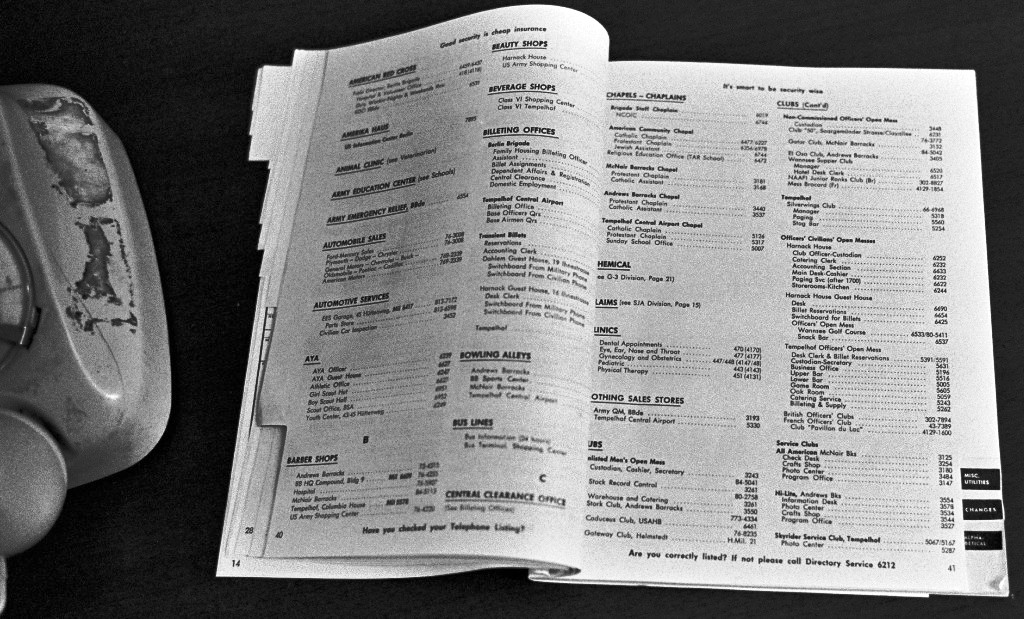Part Six – Plan For “Active Measures”
Although most of Department III [HAIII] work was passive monitoring, it also was responsible for “active measures” to disrupt or simply bog down telecommunications. For that reason, as complete a table of organization of the Landespost Berlin’s long-distance section as possible was maintained, with many staff members’ telephone numbers noted. Of particular interest were phone numbers for reporting trouble. For a major attack on Landespost Berlin’s voice and data networks, the MfS could have both disrupted communications and disrupted the effort to restore communications.
A high point for gaining an understanding of how to best disrupt West Berlin telecommunication links with West Germany came on 19 Feb 79 – between 13:24 and 14:36 – the failure of a cable between the Winterfeldt Strasse exchange and the Fernmeldeturm. During the failure, an estimated two-thirds of the connections between West Berlin and West Germany were broken. Through easvesdropping on Landespost officials, they learned that automatic trouble indicators and switching to reroute traffic failed. Traffic had to be manually re-routed. Even better from the Ministry for State Security’s viewpoint, one of the alternate routes was on a cable through East Germany.
Information such as this was not simply filed for future reference. The HAIII office in Magdeburg was positioned to interfere with traffic on the cable and did so on various occasions. Random measures included curtailing the number of circuits in service so that lines were not available when callers sought to make long-distance calls. Specific measures were directed against known “enemies” — measures which sound juvenile, but which were intended to wear people down. These included cutting off calls in mid-conversation, interruption by an “operator” and making crank calls to numbers gleaned from monitoring traffic.
In 1982, an exciting breakthrough came to the MfS in the form of an Army Security Agency sergeant who needed money. U.S. soldier James W. Hall III began supplying reams of material on U.S. electronic intelligence gathering, starting with information that for the first time — according to retired MfS officers Klaus Eichner and Andreas Dobbert — identified all electronic intelligence locations and their missions in West Germany and West Berlin.
Eichner and Dobbert wrote:
With ‘Paul’ [eventual code name for Hall] we reached a new level of cooperation between the HVA and the Department III. We formed a common “non-structural working group” to achieve an optimal evaluation of objects, activities, and skills of the telecommunications / electronic intelligence of American services. For this purpose members of the ministry and the head of HVA gave their blessing.
A first result was very complex information about the “Field Station Berlin” (FSB) on the Teufelsberg with other documents…”
Hall continued to provide secret material into 1987. Along the way he bought a photocopier for home use with the voluminous documents. Some were so sensitive that MfS head Eric Mielke carried them personally to Moscow. The MfS received a rare compliment from the KGB.
But… the information was so valuable that in spite of the unprecedented cooperation between departments of the MfS, for lower level personnel the ‘Allied’ activities in the Fernmeldeturm remained wrapped in a cloud. To supplement Hall’s wholesale espionage, further steps were taken — both to gather information and to enable ‘active measures’. These were part of HAIII’s glory days, the decade of the 1980’s.
========================================
Sources for this section:
1. Memo from Major Schreck in Ministry for State Security, Section III/8; dated 26 Jul 78; BstU, MfS – HA III, Nr. 7135. [Paraphrased in translation. West names redacted.]
2. Memo from Major Hettwer in Ministry for State Security, Section III/8; dated 23 Feb 79; BstU, MfS – HA III, Nr. 7384. [Paraphrased in translation. West names redacted.]
3. Schmidt, Andreas; “Aufklarung” des Funkverkehrs und der Telefongespräche in Westdeutschland – Die Hauptabteilung III; in Knabe, Hubertus; West-Arbeit des MfS; Ch.Links Verlag; Berlin; 2nd edition 1999.
4. Eichner, Klaus and Dobbert, Andreas; “Headquarters Germany – Die US-Geheimdienste in Deutschland”; edition ost; Berlin; 2001/2008.
Additional information:

